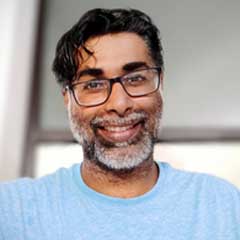'Increasing Plus One classroom strength will solve problem in paper, stifle learning'

Mail This Article
Kasaragod: The government's decision to temporarily increase seats by 30% in Class 11 rather than introduce new batches to meet the demand will stifle learning, said teachers and stakeholders.
The 30% increase will create around 60,000 new seats but the number of students in a classroom will go up to 65, said teachers. "There are schools in Kasaragod where there are 70 to 72 students. After admissions are closed, students come with special orders," said a teacher affiliated with the CPI's teacher organisation.
Teachers find the designed strength of 50 students in a Plus One classroom stretched. According to the recommendations of the Prof P O J Labba Committee in 2013, a classroom should have 40 students. "Any increase in students affects the quality of education. But the government has been dishing out this band-aid solution of increasing classroom strength for the past seven to eight years," he said.
Kasaragod MLA N A Nellikkunnu has written to chief minister Pinarayi Vijayan to introduce new batches in schools rather than increase classroom strength. "Last year, around 18% of students who cleared the SSLC examination had to rely on private schools for higher education. Increasing seats solves the problem only on paper," he said.

The government should have implemented the recommendations of the V Karthikeyan Nair committee and introduced 150 new batches in Thiruvananthapuram, Palakkad, Malappuram, Kozhikode, Kannur, Wayanad, Kasaragod districts, he said.
Earlier this year, the LDF government instituted a five-member committee headed by the former higher secondary director V Karthikeyan Nair to reorganise Plus Two batches in higher secondary schools across the state. The committee was formed after the government found that more than 100 batches had fewer than 25 students in government and government-aided schools. Most of the schools were in Thiruvananthapuram, Pathanamthitta, Alappuzha, and Kottayam districts.
Nellikkunnu said the government should shift those batches to schools in Malabar this academic year to cater to the requirement of children of the region. "It will protect the jobs of the teacher too," he said in his letter to the chief minister.
In the last academic year, 385,909 students got admission to Class XI in government and government-aided higher secondary schools. To be sure, 471,278 students had applied for admission.
Schools in the Malabar region were at the receiving end of the disparity in available batches and demand for seats, said Nellikkunnu.
In Kasaragod, 19,466 students cleared the SSLC examination. But the district has only 15,985 seats for higher education, including in higher secondary schools, vocational higher secondary schools, polytechnic, and ITIs, said C A Yusuf Chembirika, district president of Fraternity Movement, the student wing of Welfare Party of India floated by Jamaat-e-Islami Hind.
Flawed logic of increasing strength
In Kasaragod's Manjeshwar constituency, on the border of Karnataka, only one school has science batches, including biology. "Government Higher Secondary School in Kumbla gets around 1,000 applications for 60 seats," Yusuf said.
This is in contrast to the 17 to 20 science batches in other constituencies, he said. "Is the education minister of the opinion that students of Manjeshwar coastal area need not study science?" said Mohammad Vadakkekara, Kasaragod district president of the Welfare Party of India.
Increasing class strength would not solve the problem of students who wanted to study science in Manjeshwar, he said.
The Karthikeyan Nair committee received around 650 petitions from schools, people's representatives, and parents. At least 34 high schools in Malappuram expressed consent to upgrade to higher secondary schools.
Last year, Moonniyoor Higher Secondary School in Malappuram moved the Supreme Court seeking new Plus One batches. Initially, the single bench of the Kerala High Court sanctioned three new Plus One batches to the school. But the state government appealed against the order and the division bench overturned the single bench judgment.

The school told the Supreme Court that around 75,000 students cleared class X in 2022 in Malappuram but the district has only 65,035 seats, including higher secondary school, vocational HSC, polytechnic, and ITI.
In contrast, a large number of seats are lying vacant in southern districts of Kerala. The government is not taking steps to resolve the glaring discrepancy, the school told the Supreme Court.
Last year, the government created 81 provisional batches to meet the demand. Those batches would continue. This year, the government created no new batch to meet the demand, citing a lack of funds.
The teacher affiliated with the CPI's teacher organisation said a new batch would require six junior teachers, each with a salary of around Rs 50,000 per month.
On average, the government would require at least Rs 55 crore on teacher salaries alone if it were to start 150 new batches. "But if the government intends to provide quality education to our children, it should find the money for it," he said.


